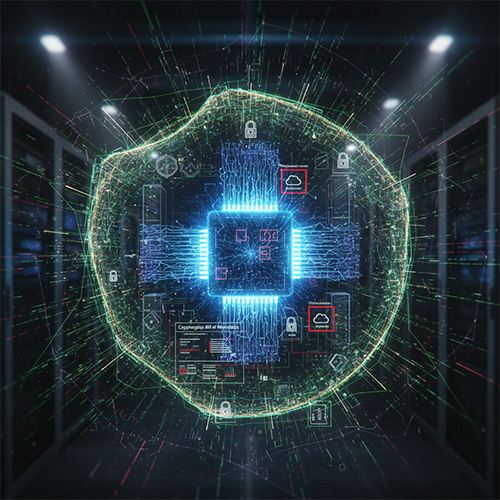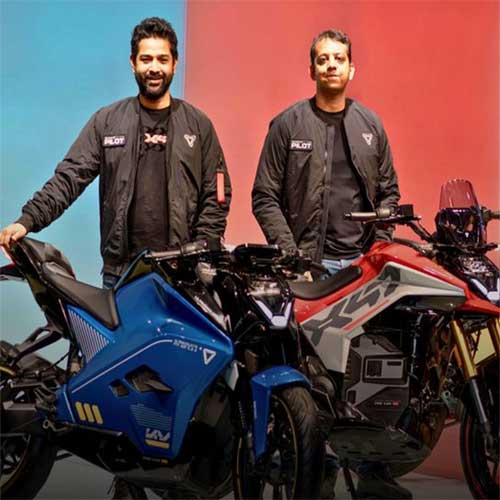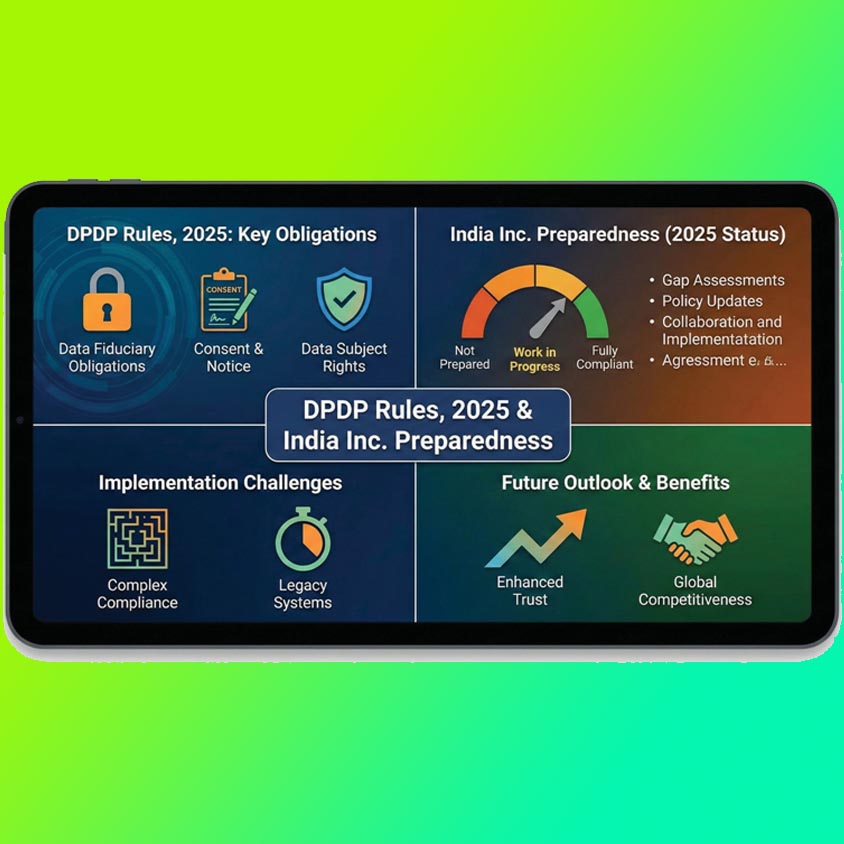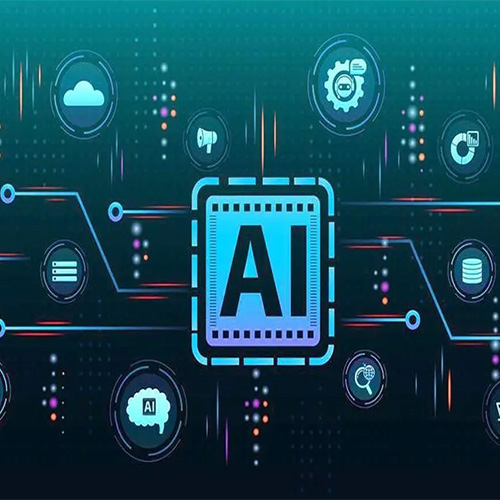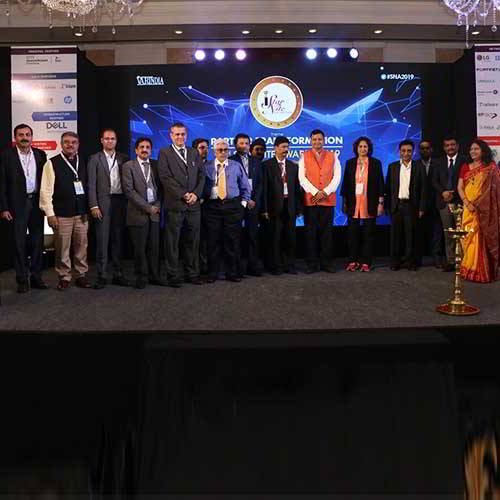
As we enter into the new digital era of growth, it is but evident that the industry as well as businesses has to pace themselves up to catch up with the trend, failing which they will be left behind in the race. The 18th Star Nite Awards 2019 amplified this development further by inviting industry stalwarts, who have been a witness to this trend to speak on topics around digital disruptions while also awarding the top vendors from the industry in different categories who have managed to digitally catapult their businesses to success.
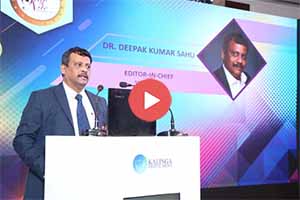 Dr Deepak Kr. Sahu, Editor-in-Chief, VARINDIA welcomed the audience by highlighting a few data points from the recently conducted Channel Leadership survey while also emphasizing on how VARINDIA has tried to understand and address the pain point of the VARs from the day of inception and has seen many changes and transformations. “Our report says that 31 per cent of businesses are yet to develop a roadmap for digital strategy. It brings an opportunity of USD48.69 billion (INR3, 408 billion) and has the potential to be unlocked by India Inc. over four years through the deployment of 5G. Data privacy should be a top priority, with 60 per cent of companies having a privacy initiative in their goals, from connectivity to content, to offering a credible platform within a broader content ecosystem.”
Dr Deepak Kr. Sahu, Editor-in-Chief, VARINDIA welcomed the audience by highlighting a few data points from the recently conducted Channel Leadership survey while also emphasizing on how VARINDIA has tried to understand and address the pain point of the VARs from the day of inception and has seen many changes and transformations. “Our report says that 31 per cent of businesses are yet to develop a roadmap for digital strategy. It brings an opportunity of USD48.69 billion (INR3, 408 billion) and has the potential to be unlocked by India Inc. over four years through the deployment of 5G. Data privacy should be a top priority, with 60 per cent of companies having a privacy initiative in their goals, from connectivity to content, to offering a credible platform within a broader content ecosystem.”
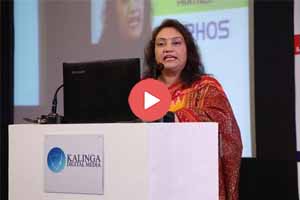 S Mohini Ratna, Editor – VARINDIA addressed the audience in which she shared the tech trends influencing the industry as a whole, which in turn brings an opportunity for all including OEMs and partners. “We have seen in our 20 years of Journey, how these "20 technologies for 2020” will reshape the world in the ever-shifting technology landscape and insights into how companies can maximize the investment opportunities these data trends reveal. The biggest concern is on digitalization of everything which means that security issues arising due to vulnerability of digital technologies were suddenly no more the traditional network or endpoint security. In such a situation, expensive Digital Transformation plans proposed by CIOs and tech leaders will come under pressure.”
S Mohini Ratna, Editor – VARINDIA addressed the audience in which she shared the tech trends influencing the industry as a whole, which in turn brings an opportunity for all including OEMs and partners. “We have seen in our 20 years of Journey, how these "20 technologies for 2020” will reshape the world in the ever-shifting technology landscape and insights into how companies can maximize the investment opportunities these data trends reveal. The biggest concern is on digitalization of everything which means that security issues arising due to vulnerability of digital technologies were suddenly no more the traditional network or endpoint security. In such a situation, expensive Digital Transformation plans proposed by CIOs and tech leaders will come under pressure.”
The evening then finally got going with the ceremonial lamp lighting that was graced by dignitaries like S N Tripathi, Director – Indian Institute of Public Administration; Rajesh Aggarwal, DG - Training, Ministry of Skill Development; Dr B K Murthy, Scientist G and Group Coordinator – MeitY; Dr Deepak Kr. Sahu, Editor-in-Chief, VARINDIA and S Mohini Ratna, Editor – VARINDIA.
The presence of the who’s who of the ICT industry on a single platform raised the grandeur and magnitude of the event to a different level never witnessed earlier.
The evening started with a motivational speech by Dr Ramesh Subramaniam, which was soon followed by a speech by Dr B K Murthy, Scientist G and Group Coordinator – MeitY.
While Rajesh Goenka, Director (Sales & Marketing) – RP tech gave his perspective on channel transformation, Ramu Raghavan, Country Sales Manager – HP Enterprise took to the stage to explain the various technology transformations that have taken place at HPE.
Rajesh Aggarwal, DG – Training, Ministry of Skill Development followed next and he talked about the importance of skilling for an economy like India. S N Tripathi, Director – Indian Institute of Public Administration enlightened the guests about some more insights from the industry which he felt a gathering like this should be aware of.
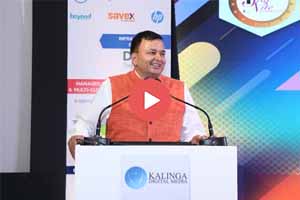 S N Tripathi, Director – Indian Institute of Public Administration
S N Tripathi, Director – Indian Institute of Public Administration
“I agree that customer is king but the definition of customer in many companies is that they write in English but read in Hindi. If customers don’t survive, the companies won’t survive. We know the history of many companies how they lost very fast in the race. The problem of today that is created and generated digitally cannot be solved digitally. You are claiming to solve problems of government and citizens using technologies but your own problems are beyond digital. We have over-promised ourselves without understanding our own institution. Most of the relationship has become transactional. The personal touch has been replaced by digital touch and digital touch is nobody’s touch. It is neither touching your mind nor your heart. Artificial Intelligence is growing and I am happy for that but I am worried about real intelligence because only real intelligence would put AI to work.”
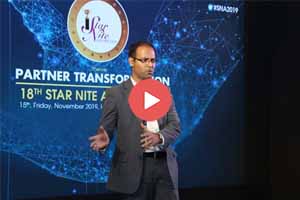 Ramu Raghavan, Country Sales Manager – HP Enterprise
Ramu Raghavan, Country Sales Manager – HP Enterprise
“HCI (Hyper-converged infrastructure) has been the most commonly used technology for 3-4 years. HPE always believes in the partner ecosystem. In my 16 years of career at HPE, I have seen that HPE has always done business with partners. We have always seen customer transformation but before we transform customers it is important we understand the newer technologies like hyper converged infrastructure and some Wi-Fi technologies which we offer with Aruba. The world is moving towards a consumption based model; so when cloud came in people started moving into cloud, which provides agility and cost-savings. HPE and its partners can work together to provide those consumption model approach, hybrid-cloud and Wi-Fi.”
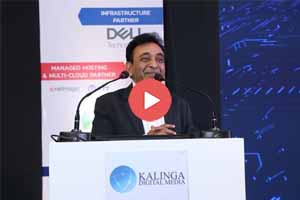 Rajesh Aggarwal, DG – Training, Ministry of Skill Development
Rajesh Aggarwal, DG – Training, Ministry of Skill Development
“Whether it is a big company or small, skill problem is always there. At the moment I handle the skill department. We have a good CSR partnership going on with IBM, Cisco, Microsoft, SAP and with two or three others. I would ask others to shake hands with us if you have better CSR plans to produce manpower and whoever is interested in running small training centers within your industry set-ups get certification from us. We will help to extend that as we believe that real training happens when the industry is deeply involved. We have recently mandated the roles of apprenticeship; this can be handy to get manpower at reasonable costs and also not all the laws apply there as the kids are learning and doing work a little bit. Apprenticeship is a very good model to look at.”
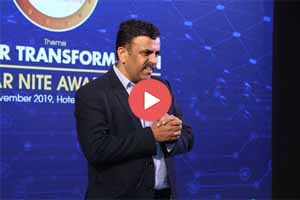 Naveen Grover, Zonal Head – North, Sophos India
Naveen Grover, Zonal Head – North, Sophos India
“Sophos is a 35 year old organization and one of the leading companies in security. While citing a few data from recent surveys, the kind of challenges most of the customers are facing are visibility, management and third is security consolidation. As our partners must be knowing, our Sophos security solutions address all these three major concerns. We are a security organization that is having a solution portfolio starting from network gateway security to mobile security. These days our endpoint devices are our mobile phones. We do not believe in working in silos. If you see the major reports of consultants, when you are using multiple solutions of a single OEM, they complement each other. This is the approach of Sophos now. We work on synchronised security approach where you are using our multiple solutions and our customers can manage all these solutions on a single console.”
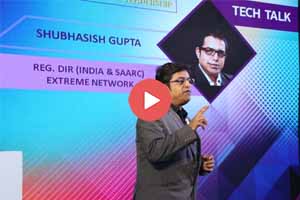 Subhasish Gupta, Regional Director (India & SAARC) – Extreme Networks
Subhasish Gupta, Regional Director (India & SAARC) – Extreme Networks
“We have invariably noticed a few things when we talk about customer pain areas – be it an enterprise customer, a corporate house or any of the government organizations. Today the network has become a very important component of any establishment. Every application runs on your IP backbone which is where the network comes in. We talk about a wired and a wireless platform; from a tech side historically networks have been pretty much fragmented. When we talk about a wired environment, which is basic switching or routing gears, you need to have various network management software, while for your wireless environment you need to have different management tools. Today what every customer is demanding is how you look at a single pane of glass through which you can manage your complex networks. This is where the industry is growing. We have not reached a stage where any vendor can say that they have everything in one pane.”
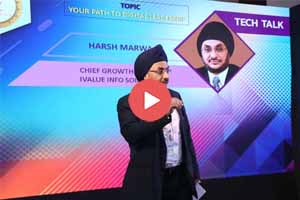 Harsh Marwa, Chief Growth Officer – iValue InfoSolutions
Harsh Marwa, Chief Growth Officer – iValue InfoSolutions
“$750 billion is the amount paid by the businesses to the hacking community last year. The way it is growing, everybody is giving a forecast that by 2020 – 2021 it is going to be $2-3 trillion. If we give an organization perspective to it, this is going to be the fastest growing industry. The World Economic Forum in its 2nd year of succession talked about 5 Risks looming large on mankind and society and two of them were about the cyber world – one is on data theft and the other is on cyber attacks. As per a recent survey done, organizations today spend more than 11% of their budget on cyber security but if you look at their posture assessment, it has dipped. There is something definitely wrong and we need to change this outlook.”
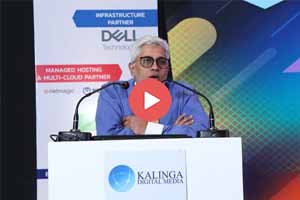 Dr Ramesh Subramaniam, Motivational Speaker
Dr Ramesh Subramaniam, Motivational Speaker
“I have worked with a company called CMS Computers. We started with the initiative to see whether we could get into the maintenance of Mainframe machines and that was the era of late 1970 – 80’s. Till 1990, Mainframes were predominant in utilization. Slowly, mainframes have dwindled and the trend of mobility, applications, and solutions has come up. When we found that the business for maintenance was dwindling, the first thing which we thought was why not we become a system integrator. One of the approaches which we always used to take for any kind of system integration was to look at the customer perspective - what we are delivering, and what does the customer want. So when we started looking at that we never used to push a box and that is where CMS Computers came in and we started thinking very differently.”
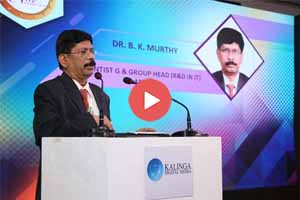 Dr B K Murthy, Scientist G and Group Coordinator – MeitY
Dr B K Murthy, Scientist G and Group Coordinator – MeitY
“The Digital India programme of Government of India has led to a strong foundation in terms of digital infrastructure, expanded digital access and the information services that today you can get on the figure tips of your mobile devices. This has poised now the next phase of growth that we want because there already has been a foundation that has been laid; now you want to build on that what happens to be the creation of tremendous digital economic value and empowerment of citizens with the new digital applications. India is among the top countries today that has experienced the fastest digital adoption by any other country ever in the world. These could be achieved only through a combination of proactive government actions, business innovations, investments and new digital applications.”
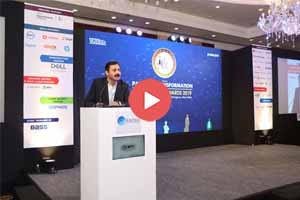 Rajesh Goenka, Director (Sales & Marketing) – RP tech
Rajesh Goenka, Director (Sales & Marketing) – RP tech
“We have recently conducted a survey and it highlights that only 20% of the channel partners meet their customers face to face. If we want to develop a relationship with customers and if we do not meet them in person then how will the business develop and as a consequence we will face loss like bankruptcy of channel partners or partners disappear etc. It is very important to meet our customers. At RP tech, it is a regulation that if we are giving the facility of credit to any customer then we meet that customer once a month at their office. Earlier we used to have 50,000 channel partners but practically only 8,000 to 10,000 partners are left. I say real marketing is meeting our customers and especially for all our channel partners.”
In the Tech Talk session, industry exponents from five corporates presented their take on their path to Digital Leadership. Ramu Raghavan, Country Sales Manager – HP Enterprise; Naveen Grover, Zonal Head – North, Sophos India; Subhasish Gupta, Regional Director (India & SAARC) – Extreme Networks; and Harsh Marwa, Chief Growth Officer – iValue InfoSolutions shared their ideas and insights on the present and future technology that their respective companies are endorsing.
Star Nite Awards, like every other year took the opportunity to recognize the Chief Marketing Officers (CMO) and the top performing IT Vendors (Corporates) serving the Indian ICT Industry. The CMO Leadership Awards saw 11 CMOs being recognised.
In the vendor award ceremony, close to 45 vendors got recognized, based on the feedback received through an online voting from channel partners and VARs.
See What’s Next in Tech With the Fast Forward Newsletter
Tweets From @varindiamag
Nothing to see here - yet
When they Tweet, their Tweets will show up here.





